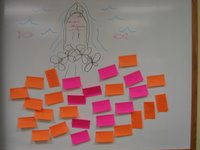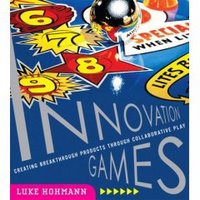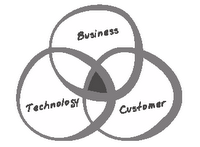As I've reflected on 2006, the above prompted me to ponder whether it described significant aspects of 2006 in regards to my "user experience."
So, let's see... My 2006 included:
 - multiple visits to San Francisco's Ferry Plaza Farmers Market. Yum -- what a special place this farmers market is on Saturday mornings. Wonderful produce; wonderful setting (on San Francisco Bay);
- multiple visits to San Francisco's Ferry Plaza Farmers Market. Yum -- what a special place this farmers market is on Saturday mornings. Wonderful produce; wonderful setting (on San Francisco Bay); wonderful farmers and sales people, all of whom really know their stuff and many of whom we know on a first-name basis, including Louis of Iacopi Farm, John of Far West Fungi, David of the Star Route Farms booth, ... We sample their offerings, share in their business and personal updates, and enrich our food preparation knowledge as well as our lives. Always an eggceptional eggsperience!
wonderful farmers and sales people, all of whom really know their stuff and many of whom we know on a first-name basis, including Louis of Iacopi Farm, John of Far West Fungi, David of the Star Route Farms booth, ... We sample their offerings, share in their business and personal updates, and enrich our food preparation knowledge as well as our lives. Always an eggceptional eggsperience! - multiple visits with multiple kids. So many friends and relatives have the most wonderful children, and they are a delight to be with. There is Simi (a.k.a. Maddy, the mad scientist who created me, Frank N. Stein), Sierra, Fiona, Anisha,
- multiple visits with multiple kids. So many friends and relatives have the most wonderful children, and they are a delight to be with. There is Simi (a.k.a. Maddy, the mad scientist who created me, Frank N. Stein), Sierra, Fiona, Anisha, Tyler, Elana, Meliza, Mason, ... Yum again and again.
Tyler, Elana, Meliza, Mason, ... Yum again and again.- an independent and foreign film discussion group. A high school teacher, two film professors, a psychotherapist, a resident of Portland Oregon, an artist, a middle school teacher,
 someone who has a vote in the British equivalent of the Oscars, a couple of high-tech folks, and several others comprise this wonderful group of people who are passionate about movies. At least once a month, the group meets in a group member's home to discuss at least two movies selected the previous month to be seen in theaters. Volver, Army of Shadows, Half Nelson, Little Children, Look Both Ways, The Science of Sleep, Water, and Cache were among the movies we discussed in 2006. Wanna listen in?
someone who has a vote in the British equivalent of the Oscars, a couple of high-tech folks, and several others comprise this wonderful group of people who are passionate about movies. At least once a month, the group meets in a group member's home to discuss at least two movies selected the previous month to be seen in theaters. Volver, Army of Shadows, Half Nelson, Little Children, Look Both Ways, The Science of Sleep, Water, and Cache were among the movies we discussed in 2006. Wanna listen in?- unconferences. I attended two of these, leading a session in one of them -- DCamp, an unconference focused on design and user experience. Often no less flawed than the conferences they try to better, such events increase attendee participation in ways I hope to see integrated with conventional conference elements in future events.
 (The photo shows one view of a promising technology used during the Interactive City Summit to enable attendees to reveal their presence and their opinions via use of their cell phones.)
(The photo shows one view of a promising technology used during the Interactive City Summit to enable attendees to reveal their presence and their opinions via use of their cell phones.)- co-developing and co-teaching a university extension course. It had been several years since I last taught a university extension course -- a successful, full-semester User-Centered Design / Usability Engineering course.
 The focus this time: the first ever substantive Managing User Experience Groups course -- a course spanning far more than "managing" user experience groups. We taught it twice during 2006 to people in various management and practitioner roles from a wide range of companies. And because of the course, I've been able to connect with many others in similar roles around the world, learning how much they would value access to such a course, and also learning -- and teaching -- how many have increasingly moved user experience into a position of significant influence in the businesses in which they work.
The focus this time: the first ever substantive Managing User Experience Groups course -- a course spanning far more than "managing" user experience groups. We taught it twice during 2006 to people in various management and practitioner roles from a wide range of companies. And because of the course, I've been able to connect with many others in similar roles around the world, learning how much they would value access to such a course, and also learning -- and teaching -- how many have increasingly moved user experience into a position of significant influence in the businesses in which they work. - a Holiday Cookie Baking, Decorating, and Eating Party. Of the many parties I attended during 2006, this was, I think, the most fun, as the many attendees got involved in a highly creative way. Now, I might be a bit biased, since this is a party that Claudia and I put on, but...
- a Holiday Cookie Baking, Decorating, and Eating Party. Of the many parties I attended during 2006, this was, I think, the most fun, as the many attendees got involved in a highly creative way. Now, I might be a bit biased, since this is a party that Claudia and I put on, but...- blogging. I guess that one goes without saying, though I haven't quite caught my stride in this blogging game...
 - Burning Man. Wow -- what an amazing and unique festival of art, creative expression, and community!
- Burning Man. Wow -- what an amazing and unique festival of art, creative expression, and community! Held on the playa of the Black Rock Desert in Nevada, Burning Man brings together an eclectic mix of people from around the world "to be part of an experimental community, which challenges its members to express themselves and rely on themselves to a degree that is not normally encountered in one's day-to-day life." Via theme camps (Fear No Martini was one of my favorites), art installations,
Held on the playa of the Black Rock Desert in Nevada, Burning Man brings together an eclectic mix of people from around the world "to be part of an experimental community, which challenges its members to express themselves and rely on themselves to a degree that is not normally encountered in one's day-to-day life." Via theme camps (Fear No Martini was one of my favorites), art installations, and numerous activities, Burning Man enables participation like no other event. And as a nearby photo reveals, Burning Man 2006 even included the long tail!
and numerous activities, Burning Man enables participation like no other event. And as a nearby photo reveals, Burning Man 2006 even included the long tail!So, were people; creativity; connection; consumer participation, interaction, and influence; 2.0; and business+design significant aspects of my 2006?
---
OK, the above review of my 2006 might not have been exactly comprehensive, but... ;-) "Should auld acquaintance be forgot..."
Also, yes, I excluded "video" from Armano's list, thinking it not all that applicable to my 2006. However, while writing this blog entry, I watched a Happy New Year animation, ABBA singing Happy New Year, and fireworks greeting 2007 in Taipei on YouTube. So...
Happy New Year.















